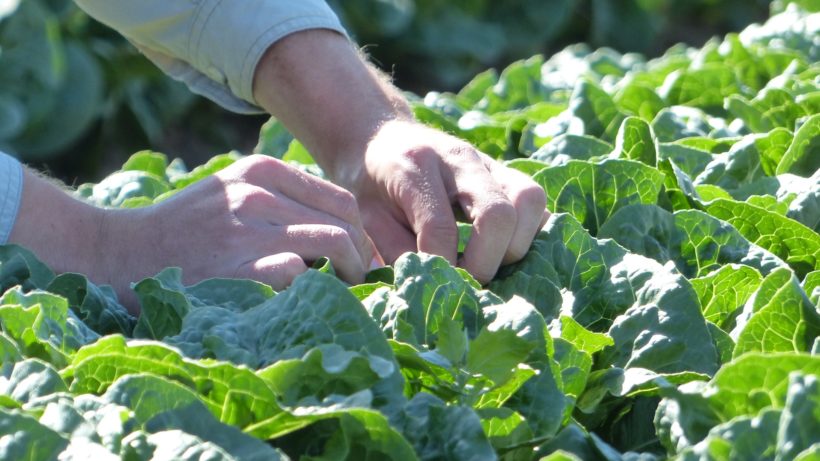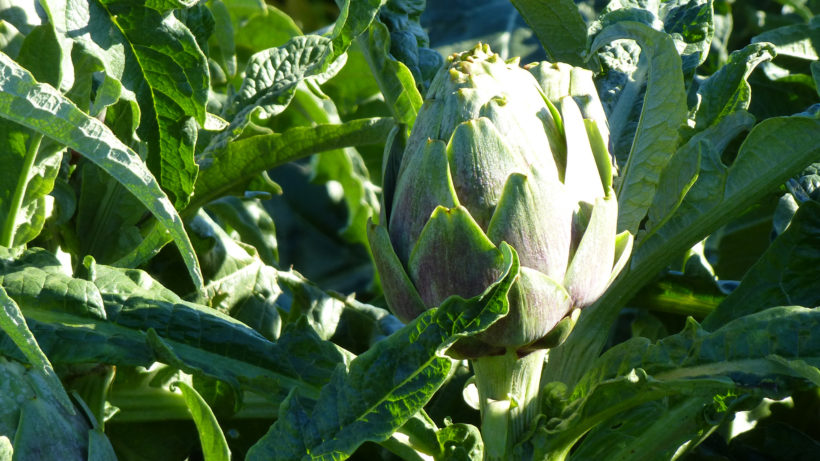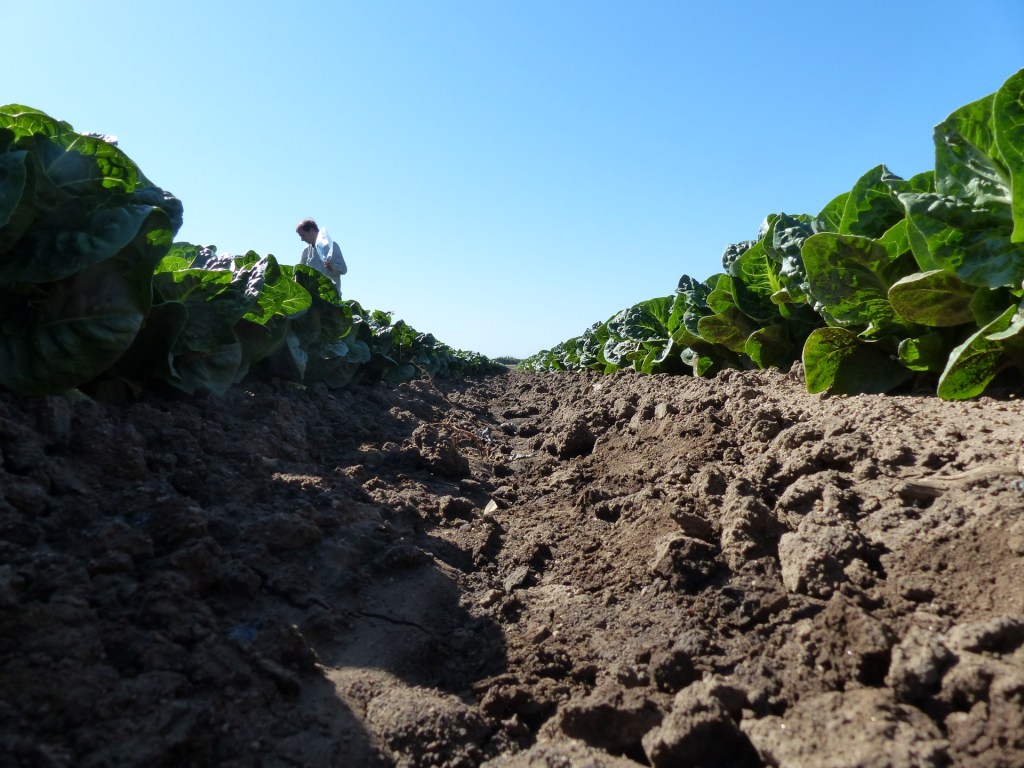A new paper published today in the journal Proceedings of the National Academy of Sciences shows that removing habitat around farm fields does not make food safer.
In fact, according to lead-author Daniel Karp, a Conservancy NatureNet Science Fellow and post doc at The University of California, Berkeley, “our science shows that the farms that had removed the most habitat actually had greater instances of pathogens, including E. coli and Salmonella. The bottomline: removing habitat near farm fields does not mitigate pathogen risk and there’s no reason to continue it.”
Why the Bottomline Matters
To understand the significance of this finding to both food safety and conservation, we have to go back to 2006, when a notorious E. coli outbreak killed 3 people and sickened hundreds in the United States.
Though the source of the outbreak was eventually traced to organic spinach harvested from a field on the Central Coast of California — the region where approximately 70 percent of U.S. salad greens are grown — no one could ever say how the spinach became infected in the first place.
In the end, wildlife near the fields took part of the blame.
“The outbreak was a real tragedy, and rapid action was desperately needed. It was assumed that because wild animals can harbor pathogens, removing their habitat would keep them away—the farther the better– and reduce risk to consumers,” says Conservancy scientist Sasha Gennet.
As a result, farmers began fencing their fields and removing habitat to comply with new rules and industry pressure. Large produce buyers also created their own farming standards and enforced them by sending auditors to farm fields.
Ultimately, farming practices changed rapidly in the Central Coast and nature paid a heavy toll. In 2013, Gennet and other Conservancy scientists published a paper in Frontiers in Ecology and the Environment that showed 13 percent of the remaining riparian habitat along the highly diverse Salinas River was degraded or destroyed following the 2006 E. coli outbreak.
Given that 90 percent of the habitat along the river had already been converted to farm fields, this was a huge loss.
“Unfortunately,” says Karp, “even though all the new regulations were intended to protect fields from contamination, there was no science to show that fencing fields and clearing habitat actually made food safer. People were guessing.”
And, as it turns out, they were guessing wrong.
Applied Conservation Science to Inform Food Safety
As part of his NatureNet Science Fellowship, Karp, in partnership with Conservancy scientists in California and UC Berkeley, set out to study the effect habitat has on adjacent farm fields (video).
“The Conservancy has been working in this part of California for almost 60 years, and could see that some of the new food safety practices were damaging to some of the most sensitive and rare natural resources in the state,” says Gennet. “Working with a NatureNet Science Fellow, who focused on this project for two years, was what it took to execute the project that is now informing the solutions.”
The researchers analyzed roughly 250,000 tests of produce, irrigation waters and rodents conducted by industry and academics on 295 farms in the U.S., Mexico, and Chile between 2007 and 2013. Tests targeted pathogenic E. coli, Salmonella, as well as common strains of E. coli. The researchers combined the findings with detailed land-use maps to identify the particular landscapes surrounding agricultural fields.
This science matters because the Central Coast of California is the heart of production for much of the produce consumed in the United States — and also because the region is globally important for biodiversity.

What happens there – from research to improve crop yields to the development of rules and regulations to govern food safety – can and does have far-reaching effects on farms and agricultural practices across the U.S. and the world.
It’s important to understand how food safety requirements and standards set by federal, state and local governments, and corporate produce buyers shape not only our grocery stores, but our farms and their place in the environment as well.
Farms Shouldn’t be Sterilized Outdoor Spaces
In 2011, partly in response to increased outbreaks of food-borne illness traced to produce like spinach, the federal government passed the Food Safety Modernization Act (FSMA) — the most sweeping overhaul to food safety regulation in more than 50 years.
Since then, the Food and Drug Administration has been engaged in rule-making, including a new “produce” rule that codifies standards for fresh produce that will alter the way fruits and vegetables are grown across 4.5 million acres of U.S. farmland.
“Our study shows that farms can be co-managed for food safety and conservation,” says Karp. “We shouldn’t turn almost 5 million acres of U.S. produce farms into sterilized outdoor spaces. In fact, we found that trying to do that could backfire – growers who removed the most vegetation experienced the greatest increase in pathogenic E. coli and Salmonella in their vegetables over time.”
The study authors also noted that the presence of diverse habitats bordering food crops can actually provide a number of agricultural benefits, including encouraging wild pollinators, like bees and butterflies, that are important for pollinated food crops. Plants, trees and other vegetation between farm fields and grazing lands can also help filter out pathogens.
Using Nature to Improve Food Safety

In addition to the recommendation that farmers stop clearing habitat around their fields, the paper also offers solutions that have been shown to improve food safety.
Farmers could leave strips of vegetation between the grazed areas and fresh produce areas to prevent contamination from cattle and wildlife that might use the fields. Fencing upstream waterways from cattle could prevent waste from spreading downstream. And cultivating crops that are usually cooked, like corn or artichokes, between fresh produce fields and grazeable lands would also improve food safety.
Other co-authors of the study are Sasha Gennet, senior scientist at The Nature Conservancy; Christopher Kilonzo, Melissa Partyka and Edward Atwill at UC Davis; Nicolas Chaumont at Stanford University; and Claire Kremen at the University of California, Berkeley.




Were feral pigs found to be involved in contamination of the food crops?